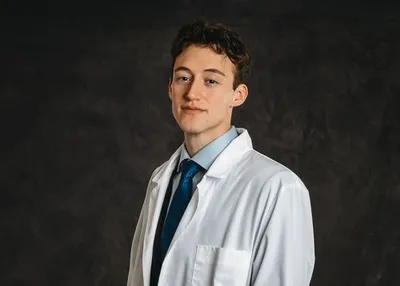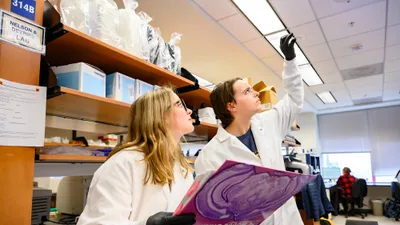1. Briefly, describe your career path.
2. Describe the work you did as a data analyst SafeGuard Services, a subsidiary
of Hewlett Packard, and currently as a senior business intelligence consultant
at SDLC Partners.
SafeGuard Services, a subsidiary of Hewlett Packard, was a Program Safeguard Contractor
for the Centers for Medicare & Medicaid Services (CMS). They serve to prevent
waste, abuse, and fraud in Medicare & Medicaid programs through the use of
problem identification, proactive/innovative data analysis, investigation, and
research. Aberrant patterns calculated from the analysis and predictive models
would be investigated further by law enforcement and government agencies.
To have records of a suspected fraudulent provider further analyzed by a medical expert, a statistically valid random sample would be formulated by me. Often stratified by intervals of billing amounts, this sample could also incorporate ancillary services that were tied to certain procedure codes. With such a high volume of submitted claims that can belong to a national provider identifier, it would not be feasible for a medical expert to examine every one so they are assigned to review a random sample. In that sample, they determine if the submitted claim is free of aberrant activity or not.
CMS would sometimes request an extrapolation I would calculate on of how much money from claims should be reimbursed back to CMS based off the findings from the sample. Typically, a 90% confidence interval would be tied around this estimate with the lower bound being charged back to the provider. Providers suspected of fraudulent activity that are pursued by CMS are met in the court of law. If they are found guilty, they will reimburse CMS the amount owed, have their professional license revoked, and do prison time. This entire process is exposed and led by predictive modeling and statistics!
Currently as a Senior Business Intelligence Consultant at SDLC Partners in Downtown Pittsburgh, we have a healthcare client that takes part in the CMS Medicare Program. By their participation in the Medicare Program, they receive a Star Rating from CMS which summarizes on a value of 1 to 5 stars on how they performed for the year against a list of measures. These measures fall under several key categories of keeping members healthy and up-to-date on preventive care, managing chronic health conditions, member responsiveness, handling problems and complaints, and customer service. The working team implemented a process to create estimations for each of these measures before the data collection period ends so that better insight on current standings for each measure to see if targets are being met. If a performing measure is lacking and caught early enough, it may be possible for the business unit to intervene and correct the problem through a root cause analysis to campaign for a new process or adding resources to fix the existing problem. This process improves the quality performance to Medicare beneficiaries in their health and drug services and optimizes health outcomes. By being able to gauge how these key categories are performing, the business units can see how the organization is providing services to members at multiple levels.
3. What are you passionate about in your work?
I enjoy giving insight and discovery into the unknown. By having the ability to leverage data to address business questions, which in turn leads important decision making, the role could be portrayed as a modern day fortune teller. The science of translating business questions into the language of mathematics and applying proper methodology to receive the greatest insight to that question is always a marvelous design of beauty.
4. Where is your career headed?
We are living in the information age where data is being collected more than ever. Business intelligence is a growing field focused on analyzing information to lead in business decision making when faced with uncertainty. It presents findings that any aspect of a company can be tracked and measured for efficient performance. Statistics has opened the doors to analyzing data across multiple industries. As companies continue to collect and store data more than ever, the need for individuals that can tap information out of raw data continues to grow. This offers an individual with the proper statistics and programming background endless opportunity and to be in control of their career.
5. How has your Eberly College experience helped shape your success?
My Eberly College experience has changed the way I view the world. My perception has changed to recognizing actions as events where each occurs with a probability. Some of these may have an underlying distribution or some may be correlated with others. This has refined my problem solving skills to look for patterns and go with conclusions on what data suggests.
6. How are you a game changer? Or, how are you making a positive impact in the world?
Regardless of the company I worked for, I have made a positive impact in the healthcare
space through multiple facets. I helped to prevent waste, abuse, and fraud by identifying
aberrant activity through data analysis. As a result, this would reduce wasteful
spending and promote lower costs. Through my work in the CMS Star Ratings Program
for a particular healthcare organization, areas of the business have been tracked
and monitored for a list of CMS Star Measures. Estimations and forecasts from models
using internal data for these measures allow insight for current standing against
target goals. From here, business units can proactively engage and provide resources
to measures that fall below target. As a direct result, this process improves the
quality performance to Medicare beneficiaries in their health and drug services
and optimizes health outcomes.
7. What is the most interesting thing that's happened to you since graduating?
As a hobby, I am currently working towards earning a Private Pilot License. Aside
from flying the plane, the most interesting thing would be navigating the plane
during cross country flight through the use of paper charts, instruments, visual
flight rules, and relying heavily on mathematics.
8. Your favorite WVU memory?
My favorite WVU memory would have being a lab assistant for Stat 211 and 215. I prepared and presented lecture notes covering course curriculum. In my lessons, I provided examples in ways I thought students would closely relate with and understand best. This may not be a memory most individuals would expect to read as a favorite. It was my favorite because it was the most rewarding by seeing all the "ah-ha" moments students would have. It was a memory that was shared and had positive impact with many.
9. How do you support and participate in the department of statistics at WVU now?
I speak highly of the Statistics Department and have great admiration for its
faculty. The experience has been nothing less than rewarding and challenging. It
has provided me with an experience that shaped me into who I am today. The experience
was valuable in forming a career around that I have been an advocate of the department
when speaking with individuals from all backgrounds and ages with any interest
in leveraging data to make informed decisions.
10. What advice would you give student interested in pursuing a career in statistics?
There is importance to understand underlying methodology from topics in statistics so that procedures can be applied properly in real world scenarios. It is also important to know how to program. A lot of software packages can do number crunching for a specific type of analysis so that there is no need to program all computations from scratch. You must be able to identify the optimal method and apply it appropriately to the dataset. My advice for a student would be to learn SQL. Part of doing any analysis involves gathering data. I have discovered that multiple datasets may need to be extracted in different formats, from files that generate at numerous frequencies, and contain data in various volumes. If you use SAS, become familiar with the SQL Procedure. You'll find yourself using this procedure more than any other.
11. Anything else you'd like to share?
Let's Go Mountaineers!



